Pictures and their descriptions come from the Art-droid app. Download it from your app store if you're interested.
Don't wanna be here? Send us removal request.
Text
Goodbye!
As a protest to Tumblr's ban on the human body and its origin, and terribly flawed methods to enforce it, I'm leaving this website for good.
4 notes
·
View notes
Text
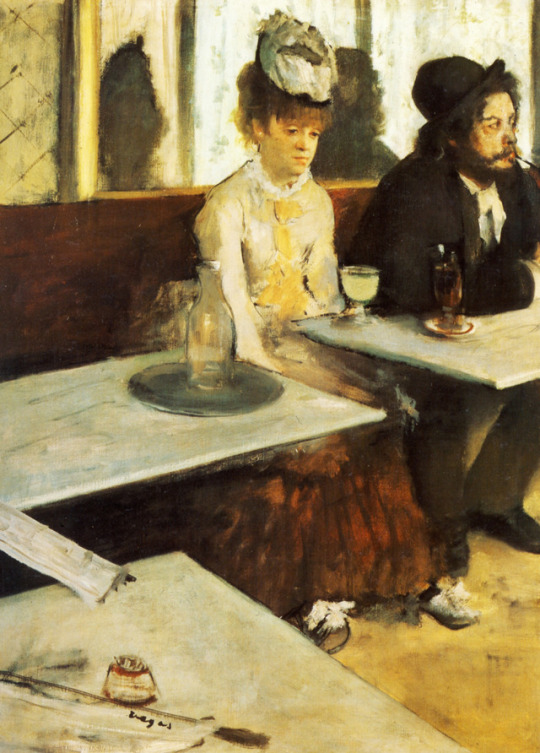
The Absinthe Drinker
Edgar Degas, 1876
The two figures in this painting are Ellen Andree, a noted French Actress, and Marcellin Desboutin, an artist and noted bohemian personality, sitting at the Café de la Nouvelle-Athenes, in Paris, France. In front of the woman sits a glass of the greenish colored liquid, Absinthe. It was first exhibited in 1872, where it was criticized as ugly and disgusting, and a later exhibition in 1892 it was removed from the show. It was shown a year later inn England, where it sparked controversy. The woman in the painting was derided as a whore and the entire image was seen as a blow to morality and the degradation of society due to absinthe.
5 notes
·
View notes
Text
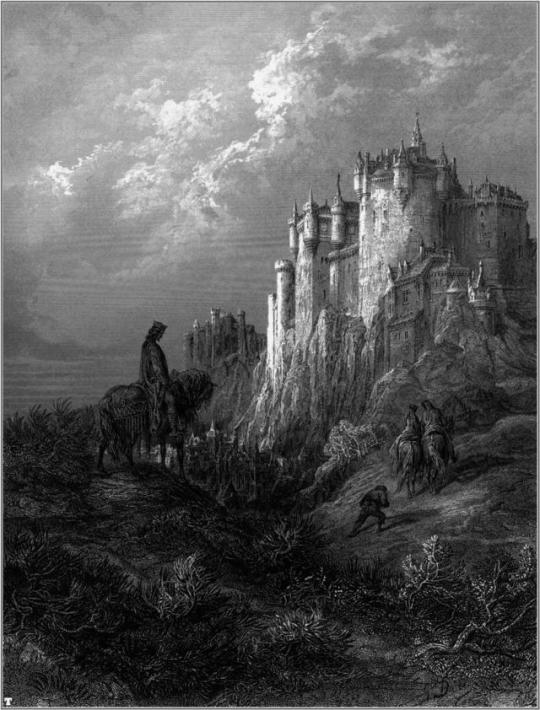
Idylls of the King
Gustave Dore
Dore created many illustrations for The Idylls of the King, a set of twelve poems by the English poet Alfred, Lord Tennyson. The poems retell the story of King Arthur and his knights, the rise and fall of his kingdom, and his love for Guinevere, and her subsequent betrayal of him. Tennyson’s retelling of the Arthur legends was a commentary on the Victorian Era of the times in which he lived, and it was a very popular literary theme during Dore’s lifetime. The cycle of narrative poems were published during Dore’s lifetime, beginning in 1856, the last one being published in 1885, two years after his death. As such, his illustrations of the poems were one of his last works before his death.
1 note
·
View note
Text
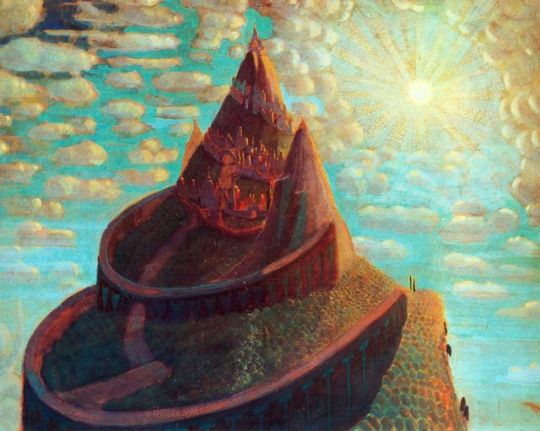
Castle (Castle Fairy Tale)
Mikalojus Ciurlionis, 1909
0 notes
Text
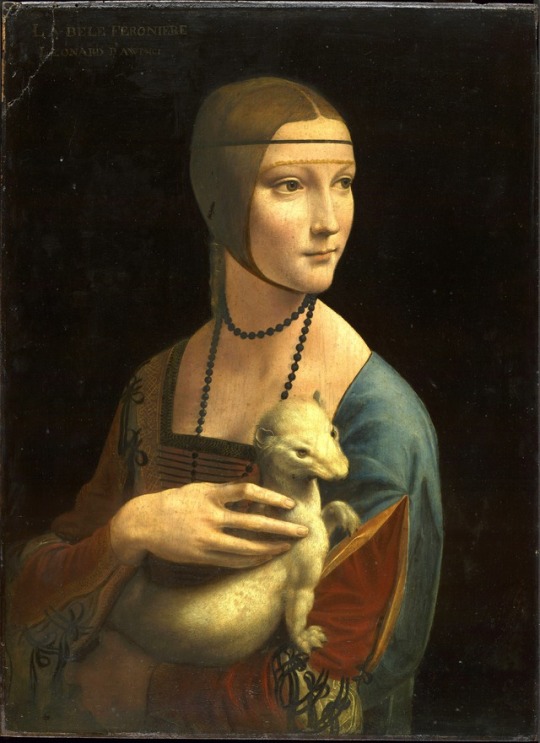
The Lady with an Ermine
Leonardo da Vinci, 1496
30 notes
·
View notes
Text
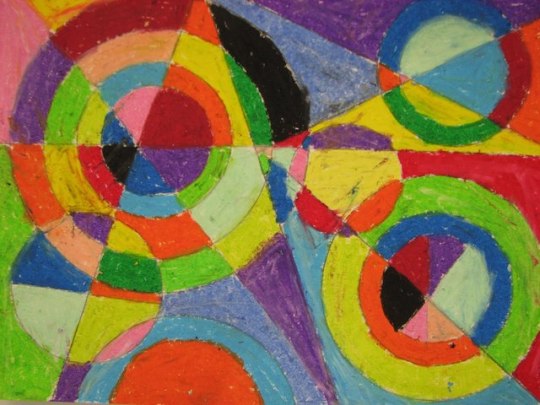
Color Explosion
Robert Delaunay
19 notes
·
View notes
Text
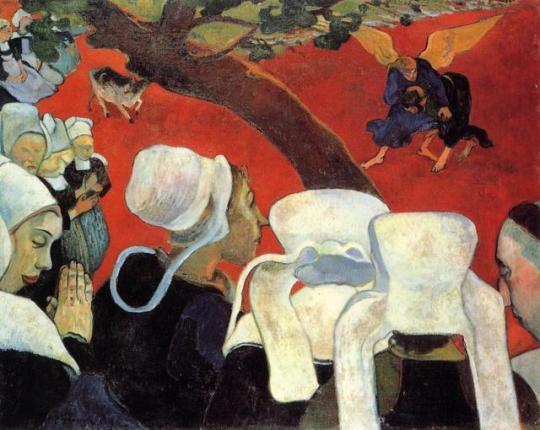
The Vision after the Sermon
Paul Gauguin, 1888
This painting depicts the scene from the Bible in which Jacob wrestles an angel. As if in a modern-day wrestling arena, French women watch the wrestling match from afar. This painting was created during Gaugin’s stay in Pont-Avon, France, which is where he created his other masterpieces, The Yellow Christ and The Green Christ. This painting also incorporates elements from his Christ series, which also place Breton French women alongside a Biblical scene, placing them as observers in the story. In his typical style, flat areas of color are outlined by thick black lines, and the figures are void of any shading or depth of color.
3 notes
·
View notes
Text
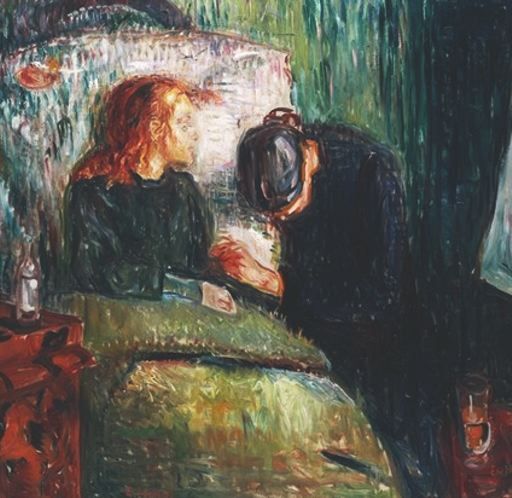
The Sick Child
Edvard Munch, 1907
Munch had a troubled familial past. In addition to his overbearing pietist father, his mother died of tuberculosis when he was a small child, and his sister died nine years later of the same disease. This painting is an image of Munch’s older and favorite sister Sophie lying in bed, dying of tuberculosis when she was 15 years old. Munch created many reproductions of this painting, including one that was held in Dresden, Germany. In the 1930’s and 40’s Nazi’s deemed Munch’s art as “degenerate art” and removed all of them from Germany to be sold at auction. This piece was bought and later donated to the Tate Gallery in London, where it remains today.
1 note
·
View note
Text
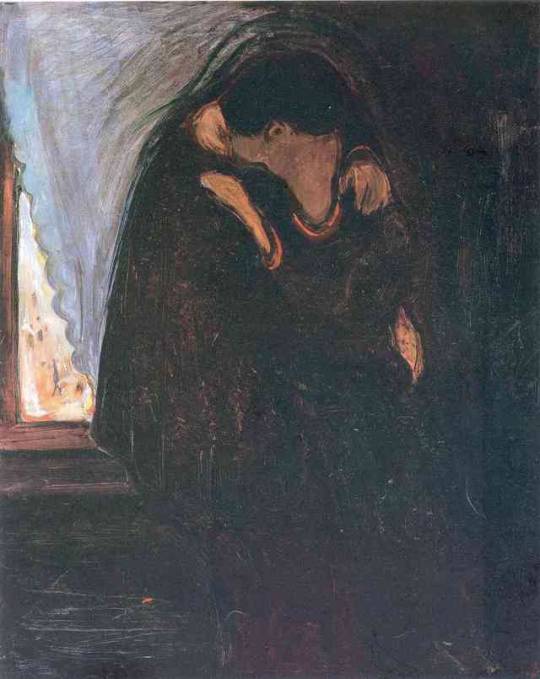
Kiss
Edvard Munch, 1897
Munch created many works in a thematic vein, including The Kiss, and exhibited them along side each other in what he called The Freize of Life. The themes in the series ranged from love and death, sex, anxiety, infidelity, jealousy and the stages of life, and included the famous painting The Scream. This painting captures an intimate moment between two nudes, the woman pulling the man towards her in a lover’s embrace, mouths locked in a passionate kiss, and is an example of Munch’s theme of the femme fatal as the dominant creature, taking control to feed her sexual appetite.
11 notes
·
View notes
Text
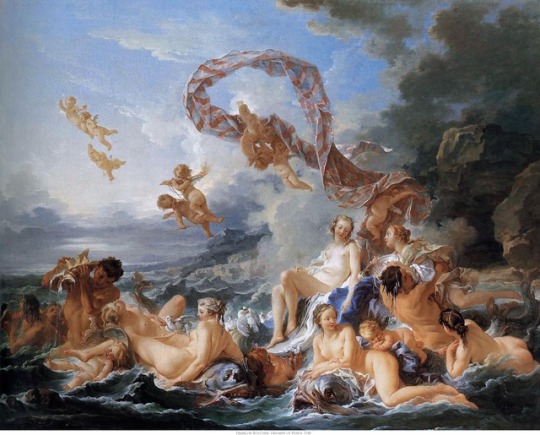
The Birth and Triumph of Venus
Francois Boucher, 1740
Boucher’s popularity during his career was matched only by his artistic versatility. In addition to theatre costumes and set designs, tapestries, and designs and decorations for court celebrations, he also dabbled in gouache. This piece is one of only three gouache paintings by the artist. This piece, which was probably produced as an independent work, rather than as a study for a painting, bears a striking resemblance to another one of his paintings, Venus on the Waves. Boucher was a master at depicting idyllic classical scenes, and in this one we see his adeptness at portraying the mythical scene of impassive Venus, surrounded by nymphs and tritons, all paying tribute to the goddess of love.
4 notes
·
View notes
Text
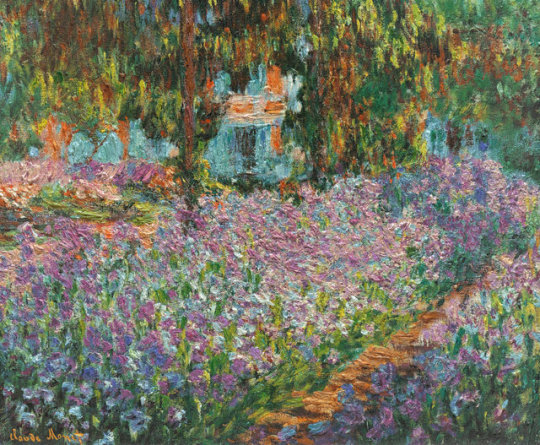
Irises at Monet's Garden
Claude Monet, 1900
2 notes
·
View notes
Text
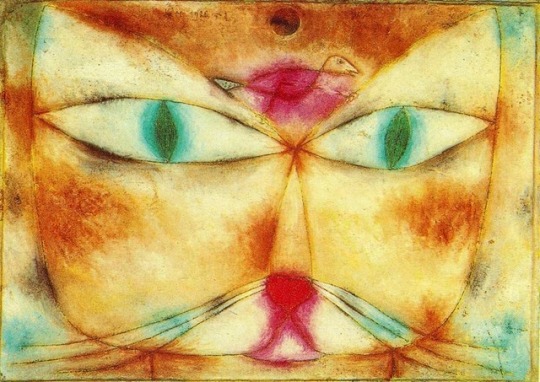
Cat and Bird
Paul Klee, 1928
0 notes
Text
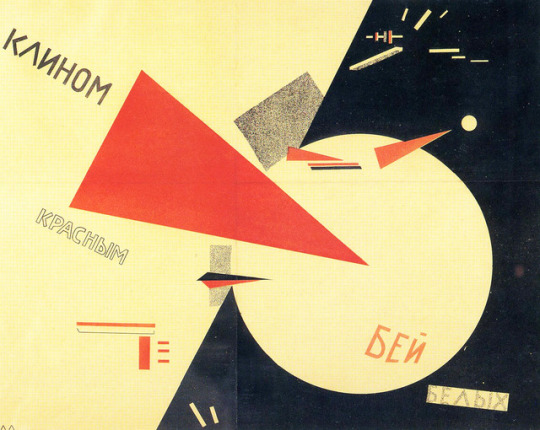
Beat the Whites with the Red Wedge
El Lissitzky, 1920
Beat the Whites with the Red Wedge is one of Lissitzky's earliest attempts at propagandistic art. He produced this politically charged work in support of the Red Army shortly after the Bolsheviks had waged their revolution in 1917. The red wedge symbolized the revolutionaries, who were penetrating the anti-Communist White Army. Here Lissitzky uses his signature coded color combination of red, white and black, which reinforces the message indicated by the work's title. Colors and shapes take on directly symbolic significance. For example, the smooth, curvilinear walls of the white circle are pierced by the sharp point of the red triangle: the Red Army has pierced the defenses of the White Army. Dramatic color contrasts also create confusion regarding space-which area is positive? Which is negative? Meanwhile, small geometric forms in the limited color scheme float like tiny projectiles through the space along with text. Here, basic forms combine with actual text: painting and typography are fused. This work is an important precursor to Lissitzky's Prouns, when Suprematist art moved onto a three-dimensional visual plain.
0 notes
Text
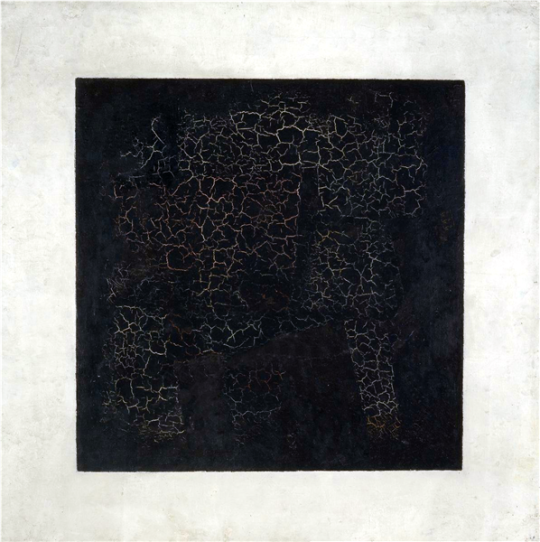
Black Square
Kazimir Malevich, 1915
One of the most famous paintings in Russian art, Black Square marked the turning point of the Russian avant-garde movement. Before creating this painting, Malevich spent eighteen months in his studio, laboring over thirty non-objective paintings. In the end, he had created a series of non-objective paintings, of which Black Square is one. His invention of the word “suprematism” was meant to refer to the supremacy of the new geometric forms. Although the other works in this period were created with visual brushstrokes and asymmetrical forms, Black Square was the prominent piece, with no visual textures and a perfectly symmetrical shape, as it was the paramount of Malevich’s change to pure geometric abstraction: suprematism.
5 notes
·
View notes
Text
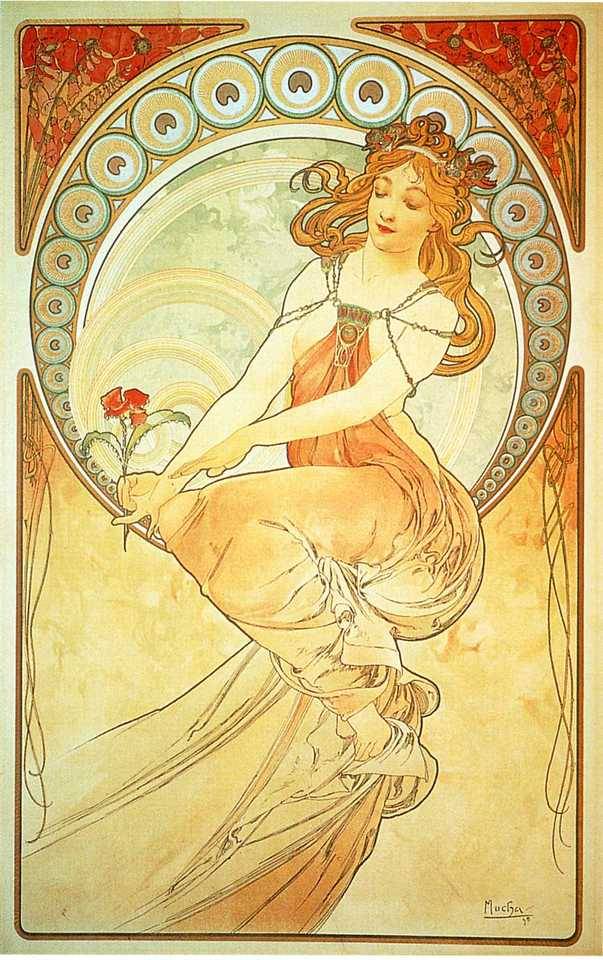
Painting
Alphonse Mucha, 1898
1 note
·
View note
Text
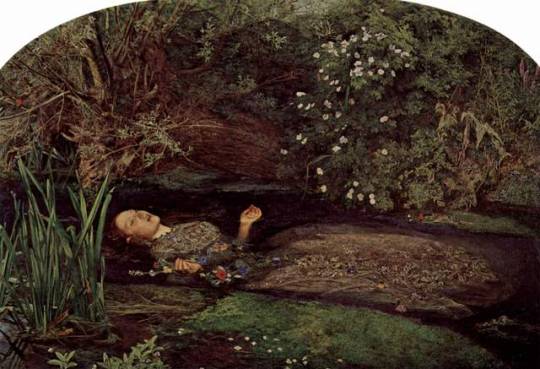
Ophelia
John Everett Millais, 1852
7 notes
·
View notes
Text
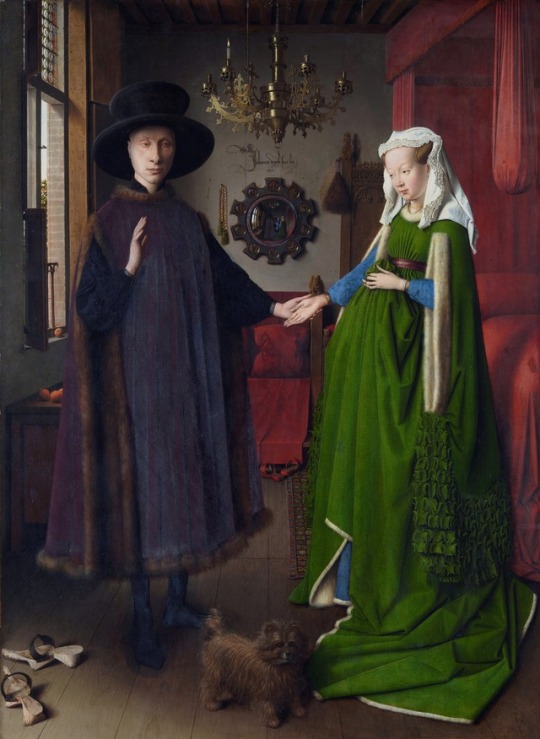
The Arnolfini Wedding
Jan van Eyck, 1434
0 notes